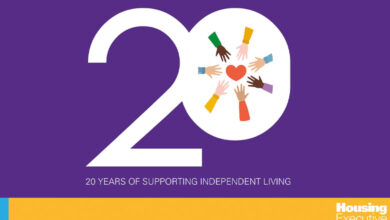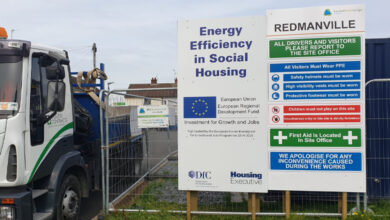Policy making in political parties
Devolution has increased the influence of policy formulated by local politicians. Peter Cheney examines how the political parties make decisions and the ‘dos and don’ts’ when lobbying.
Much of the research behind manifestos and ministerial announcements is done by staff behind the scenes. While policy officers tend to avoid publicity, their work is having an increasing impact on how Northern Ireland is run as devolution settles down.
Policy officers and Assembly spokespeople are generally the best contact points for proposals affecting the whole region (as opposed to constituency cases). Policy staff tend to work between their party headquarters and offices in Stormont. The UUP asks that queries be sent directly to its policy unit in Parliament Buildings. Sinn Féin points out that its headquarters is at Parnell Square, in Dublin.
Processes
All parties have internal processes for approving policy. That said, quicker decisions are taken when a sudden announcement is made or when making amendments to bills going through the Assembly.
DUP policy is set by its central executive committee, which meets at least four times a year. It comprises the party’s MPs, MLAs, MEP and peers and delegates from the party’s associations. Special advisors have an influential role in day-to-day decision-making.
Sinn Féin’s main policy-making body is the annual ard fheis, where motions can be proposed by branches (cumainn) and the party executive (ard chomhairle). Decisions on more immediate strategy are taken by the ard chomhairle e.g. on Martin McGuinness’ nomination for the Irish presidential election.
In the UUP, the policy unit draws up a provisional policy and consults the spokespeople. In-depth research is then carried out. Once the spokesperson is satisfied with the outcome, he or she usually presents the proposal to the party leader and Assembly group at one of its weekly meetings.
The SDLP’s policy sub-groups report back to the party policy committee, which then takes proposals to conference for ratification.
Within Alliance, a policy committee (consisting of members with particular interests) considers proposals. A successful idea goes forward to the party executive and then to the party council (which meets four times a year). Members also debate and vote on motions at the party conference.
Westminster
Northern Ireland MPs and peers (and indeed members of UK-wide parties) also have some say on policy set at Westminster. Despite having no MPs, the UUP’s four peers “take an active role in many non-devolved matters”. Sinn Féin ministers influence Westminster through direct negotiations, including meetings of the Joint Ministerial Committee (which brings together the the UK Government and all three devolved administrations).
The Conservative Policy Forum sends out discussion papers to its local branches; one exists in East Belfast and others are planned in Strangford and at Queen’s University. Views are summarised and forwarded to the relevant Minister.
Labour’s Northern Ireland Secretary, Boyd Black, sits on its National Policy Forum, which meets 2-3 times per year. A separate Northern Ireland Policy Forum is aiming to produce a Labour manifesto for future elections here.
Lib Dem policy is decided at the spring and autumn party conferences; the agenda is set by the federal policy committee.
Dublin
Fine Gael is reviewing its policy operation and has set up 11 internal policy committees; each is chaired by a TD and frequently attended by ministers. The committees are supported by a small research unit. Fine Gael points to its “very extensive policy bank” developed prior to the general election, and these policies remain its guiding principles.
Labour and Fianna Fáil consider the individual TD or Senator the best place to start. Labour looks for recommendations with “a practical, positive effect on peoples’ lives” and which are either cost-neutral or “ideally” present cost savings to the tax-payer. Its TDs and senators write policy proposals and then bring these to the parliamentary party; Labour also has a research officer.
Fianna Fáil wants to see “improvements for the majority of people rather than small issues that only impact on the few.” Oireachtas members do the groundwork and the party then sends proposals out for consultation to a wide range of groups, including NGOs.
Across the board, policy officers are often under pressure to meet deadlines and the demands of politicians. The earlier a view is put forward, the more time and attention can be given to it.
“Be timely,” one staffer advised, “particularly if you want to influence a piece of legislation and there is a small window of opportunity.”
Preparation
A small number of requests to the right people is appreciated, rather than writing to all 108 Assembly members.
Lobbyists need to understand the difference between reserved and excepted matters (where policy is set by Westminster) and transferred matters (in Stormont’s hands), and the potential for North/South co-operation.
“Don’t assume the person you’re talking to has detailed knowledge, but don’t patronise” is one snippet of advice. Too much detail or bombarding someone with literature that they won’t have time to read can be counter-productive.
“A short pre-brief would be useful,” another policy officer suggested. “This might only need to include the range of topics which are likely to come up during the meeting.”
Before a meeting, the proponent should ensure that they know their subject area inside out, work out their key priorities and be prepared for questions. Researching the party and the representative is useful, as you may discover shared interests.
Useful tools for a meeting can include: a one-page briefing note with clear action points; a draft suggested question or letter to a Minister; and a request to meet the relevant committee (if necessary).
Honesty about a policy’s potential drawbacks, as well as its benefits, gains respect. Parties are increasingly focusing on the financial implications of a policy and whether it can lead to a long-term cost saving.
Crucially, a party’s support for a policy should not be taken for granted. It’s important to consider how, or indeed whether, the idea fits with the party’s objectives (see opposite).
“Equality is our watchword,” a Sinn Féin spokesman said, “underpinned by the need to protect and advance citizens’ rights on a socio-economic, political, cultural and legal basis.”
The UUP assesses whether propositions are “sensible and affordable” and ultimately wants a proposal that helps the electorate “make an informed and balanced decision” at election time.
SDLP policy officers check if an idea addresses public need, aligns with the existing party policy and ethos, complements what the party has said in the past, and aligns with existing government policy (as well as the views of other stakeholders and parties). The final test is whether it “can catch the imagination of the public and the media.”
Consultation
Some parties run formal consultations, inside and outside the party, to gather views. The UUP, for example, gave schools and youth groups a say as it prepared last year’s manifesto. Almost 2,000 responses were received and several candidates went out and spoke to young people directly. The DUP has also published policy documents for consultation.
Sinn Féin convenes local policy review groups to hear members’ views. A similar approach is being developed in the UUP, to make use of the “wealth of experience” from its large membership (over 2,500).
Key policy themes
DUP
• More jobs
• Low rates
• Tougher sentences
• Fixing education
• Better health
• Working together
• Strengthening unionism
Sinn Féin
• Unity
• Economy
• Accountability in governance
• Agriculture and fisheries
• Education
• Local communities made safe
• Health
UUP
• Economy
• Protecting the health system
• Education
• Shared future
• Better form of governance
SDLP
• Economy
• Shared future
• Unity
Alliance
• Shared future
• Rebalancing the economy
• Modernising public services
• Maximising employment
• Protecting the most vulnerable






